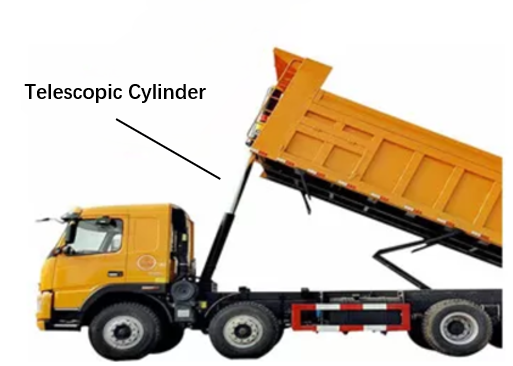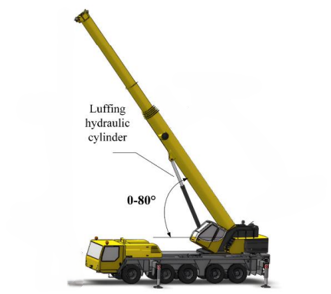Hydraulic cylinders are indispensable in a wide array of heavy-duty applications, from construction equipment to industrial machinery. Among these, the luffing cylinder plays a particularly vital role in lifting and positioning mechanisms. But what exactly is a luffing cylinder, and how does it differ from other types such as a telescopic cylinder or boom cylinder? This blog provides a deep dive into the definition, function, and comparisons of luffing cylinders within the context of hydraulic technology.
A luffing cylinder is a specific type of hydraulic cylinder used to control the movement of a boom or arm, particularly its angular elevation. The term “luffing” originates from maritime and crane operations, referring to the act of raising or lowering a jib or boom. In heavy machinery such as cranes, excavators, and aerial work platforms, the luffing cylinder allows the boom to pivot upward or downward, thus adjusting its reach and working height.
Luffing cylinders are typically double acting hydraulic cylinders, meaning they can exert force in both directions—extending and retracting—using hydraulic fluid pressure. This bidirectional movement gives the machinery precise control and greater efficiency when lifting, lowering, or positioning loads.
While both telescopic and luffing cylinders are commonly found in lifting machinery, they serve different purposes and operate differently.


| Feature | Telescopic Cylinder | Luffing Cylinder |
|---|---|---|
| Structure | Multi-stage (nested tubes) | Usually single-stage |
| Motion Type | Linear extension and retraction | Angular movement (pivoting) |
| Stroke Length | Long stroke in compact retracted form | Typically shorter stroke |
| Common Applications | Dump trucks, lifting platforms, garbage trucks | Cranes, aerial work platforms, excavators |
| Space Efficiency | Excellent for space-constrained applications | Requires more mounting space due to single-stage design |
| Control Direction | Generally vertical movement | Angular/luffing (up/down pivoting of boom) |
| Cylinder Type | Often single acting (but can be double acting) | Usually double acting for bidirectional control |
| Customizability | High, often tailored for long-stroke needs | High, especially in lifting equipment with specific angle control |
So, in a comparison of telescopic cylinder vs luffing cylinder, the main distinction lies in the type of motion—linear extension versus angular adjustment.
In many applications, boom cylinders and luffing cylinders are used together to control different aspects of a boom’s movement. A boom cylinder may raise or extend the main section of the boom, while the luffing cylinder adjusts its angle or tilt. This dual mechanism allows for superior range of motion and flexibility, especially in mobile cranes and hydraulic excavators.
Given the diversity of machinery and operational needs, manufacturers often provide custom hydraulic solutions. Custom luffing cylinders can be designed to specific stroke lengths, bore diameters, mounting styles, and pressure ratings to meet unique application requirements. Whether it’s marine lifting equipment or aerial platforms, custom hydraulic systems ensure optimized performance and reliability.
When choosing a luffing cylinder, it's important to understand the difference between acting hydraulic cylinders:
A luffing cylinder is a crucial component in hydraulic systems where controlled angular movement of a boom or arm is needed. Unlike a telescopic cylinder, which provides extended reach, the luffing cylinder is all about precision in tilt and positioning. Working alongside boom cylinders, and often built as double acting units, luffing cylinders contribute to the precise, safe, and efficient operation of heavy machinery.
For specialized applications, custom hydraulic solutions allow for the integration of tailored luffing cylinders into your equipment. Understanding the role and mechanics of luffing cylinders ensures better decision-making when designing or maintaining hydraulic systems.